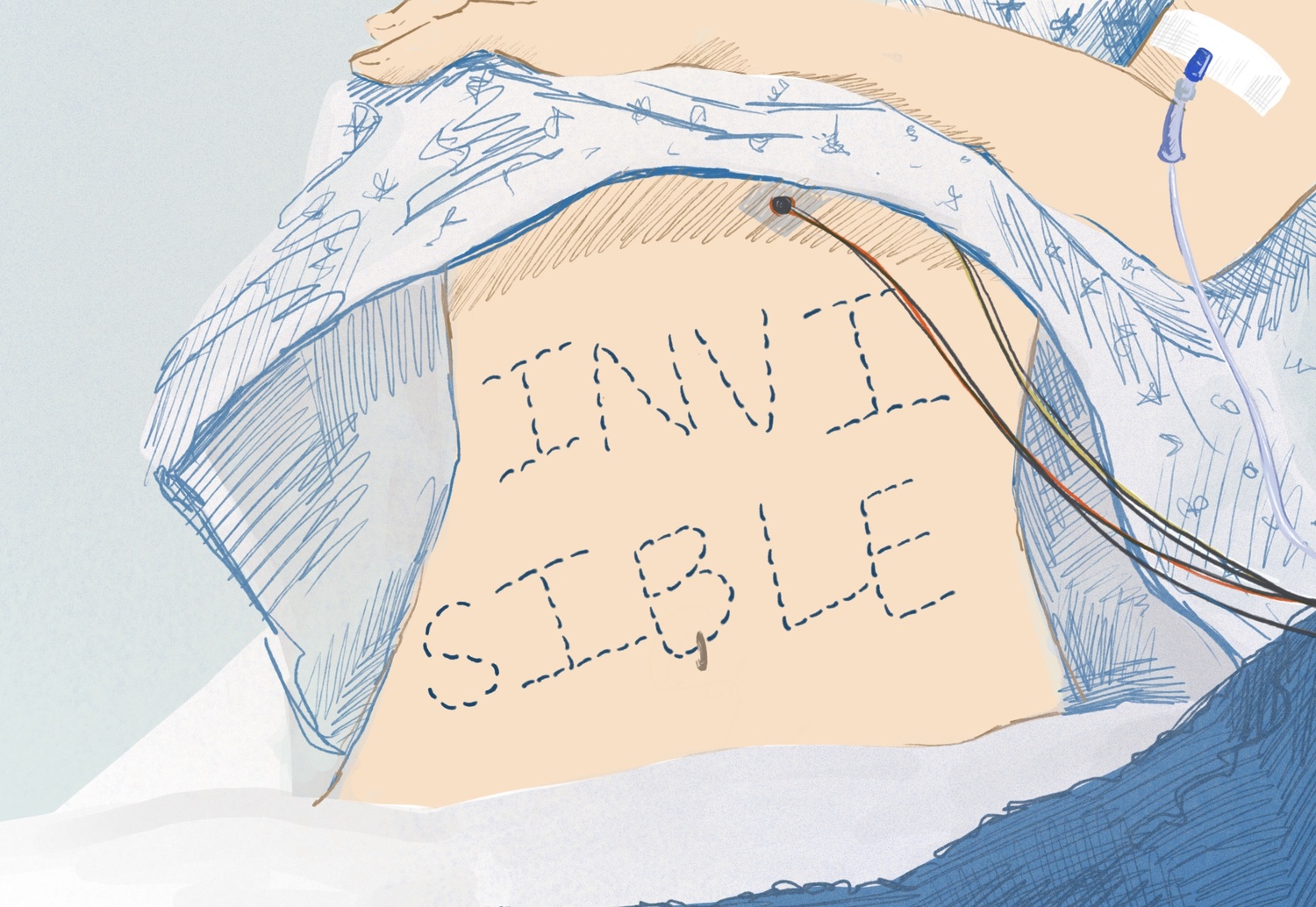
The Next Thing I Remember
I have six scars. They are proof of the six years that I have lived with a painful and destructive disease. Without them, I often wonder if anyone would believe that I am hurting.
Each scar covers the same wound. I feel the ache as I look at myself in the mirror every morning. If I wake up wobbly and bump one of the scars on the corner of my desk, a twinge of pain and memory resurfaces despite the years that have passed. I am reminded of the struggle, of what I’ve endured each time I sit on my living room couch. Suddenly, I’m weak again, holding my Papa’s hand while tears run down my cheeks and onto my shirt.
The soreness lingers, and the evidence remains. I live now with the constant reminder of survival — the scars on my body are remnants of my pain. My body is haunted by the internal damage caused by my reality — Crohn’s disease forcing itself onto the surface of my skin.
I remember when the scars were open wounds. Freshly 16, I lost the first half of my junior year to my illness.
I lay on a sterile and solid bed, surrounded by faded yellow walls, while I waited for surgery. The fluorescent lights of the hospital clouded my vision, a faint beeping alerted me that my vital signs were due for a check-in, and the cutting scent of disinfectant permeated the air around me.
My only entertainment was the city-like bustle of the hospital hallways. A team of doctors arrived in my room with the rising sun each day. I felt like a witness on trial, waiting for the jury to decide my fate.
Innocent, they determined, were my heart and my brain. More evidence was required to determine if my body was guilty of attacking a teenage girl.
That day, the doctors would discover what was happening inside my body, and the exact way in which it had turned against me. That day, the jury would deliberate on my body’s guilt.
I was wheeled to a different version of the same room — this time with white walls and even brighter lights. Faces looked down at me, hands poked at my arms, and soft smiles reassured me that I was well taken care of. I was a baby in a crib.
A nurse placed a mask over my nose and mouth, and though I told my arms and legs to move, my defiant frame refused. All of my senses went dark.
The next thing I remember is the ache, of hurting still.
My eyes were heavy. I’d need a construction excavator to open them. The twinge persisted in my abdomen, telling me that the once-open wounds had now been stitched closed. It was the start of healing, but not yet relief.
I fell back asleep. Days went by. I woke up more easily.
For my disease to be real to others, sometimes I feel I need evidence, a physical trace of what was happening inside before it was made visible by the surgery, to have a story.
I have six scars, and they are my story. Six scars for six years of managing a disease that has controlled so much of my life since its inception.
What I realize now is that I am more than the scars that mark my stomach; my illness is defined by more than this physical representation. For something to be real and to be felt, it does not need to be seen.
While my internal wounds manifested outside of my body and caused me great pain, they were stitched up and mended, their tenderness fading. The open wounds I thought would be eternal are now scars, and the constant ache has disappeared into memory.
Still, my scars remain. Occasionally, a friend hugs me too hard and bumps my stomach by accident. Other times, I flop face-down onto my bed after a long day, my scars feeling the brunt of this movement. It’s in instances like these that the ache returns briefly — a nod to the time I spent just trying to survive.
In the end, the open wounds carry the initial burden. But the scars manage the weight of struggle and the proof of survival, of enduring a life unseen by others. Truth exists beyond what is seen, but my story also rests in my scars. Underneath their faded lines, a 16-year-old girl remains — she is still here etched into my history, into my skin.
—Magazine writer McKenzie E. Lemmo can be reached at mckenzie.lemmo@thecrimson.com.


